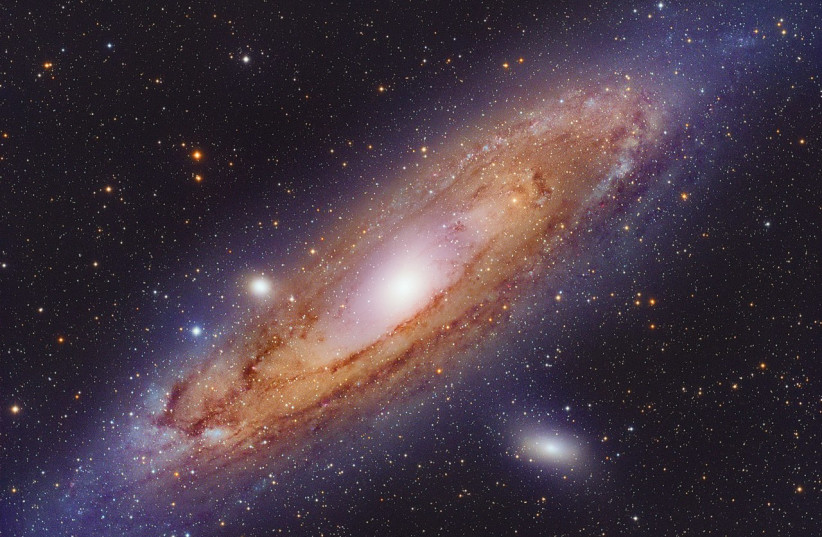Galaxies collide in this stunning image recently taken by NASA's Hubble Space Telescope, centered on the constellation Bootes.
The three galaxies in question have been designated as SDSSCGB 10189 and are depicted in the process of merging with one another due to the collision. This will see their gravitational interactions with each other cause their spiral structures to become distorted as it intertwines.
In the end, this will result in one massive combined galaxy, the sum total of the three merged galaxies together.
The fact that these galaxies are colliding together isn't too surprising. Scientists have noted that these three galaxies are all incredibly close to one another, just 50,000 light years away.
To put in perspective just how close that is, the closest galaxy to our Milky Way Galaxy, the Andromeda Galaxy, is over 2.5 million light years away.

So what will this new galaxy look like?
While we can currently only speculate what this combined galaxy will look like, it is theorized that it could result in the formation of what is known as the Brightest Cluster Galaxies (BCGs), which are the largest and brightest galaxies in the universe and are always the brightest galaxies in any given galaxy cluster.
Interestingly, the Milky Way Galaxy may one day end up meeting a similar fate.
While the Andromeda Galaxy is still very far away, we are technically on a collision course.
In around 4.5 billion years in the future, both galaxies, the largest in the Local Group, will end up merging in a sort of cosmic dance, forming a new galaxy.
Don't worry though about what will happen to the planets and stars involved.
The Milky Way has around 300 billion stars and the Andromeda Galaxy has around 1 trillion. Since the stars are so far apart, the odds are that none of the stars will actually end up colliding.
So is Earth safe?
Well, technically no – the Sun will become so bright and hot by then that the planet will likely become completely uninhabitable, the surface becoming far too hot for water to exist in a liquid state. But otherwise yes, the planet might be fine.
Why might? Because there is a chance that this could cause the Sun to either become ripped to shreds by a black hole or just be thrown entirely out of the newly merged galaxy.
Why would this happen? This is because while the stars and planets of this new galaxy won't collide, the supermassive black holes at the center of each galaxy will.
Over a process of what may be some millions of years, the two supermassive black holes (Sagittarius A* in the Milky Way and the P2 concentration of Andromeda's nucleus in the Andromeda Galaxy) will eventually merge together. This could severely impact the gravity in the new galaxy and could possibly trigger a massive burst of energy as strong as 100 million supernovae.
And in all this chaos, the Sun could be brought closer to the galactic core and the supermassive black hole therein and eventually be slingshotted out of the galaxy or be brought too close and torn apart.
But ultimately, this is what would happen when the Milky Way and Andromeda Galaxy merge together. But the process won't stop there.
The Milky Way and Andromeda Galaxy are both part of the Local Group, which contains at least 80 different galaxies.
And after 150 billion years, all of these galaxies will also end up merging together.
